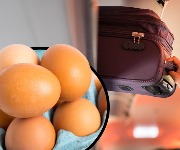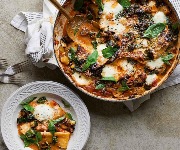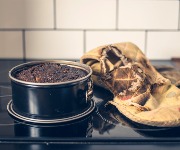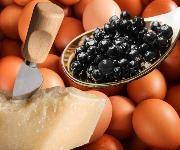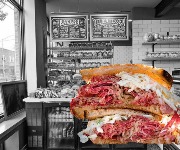How to eat lucky this Chinese New Year
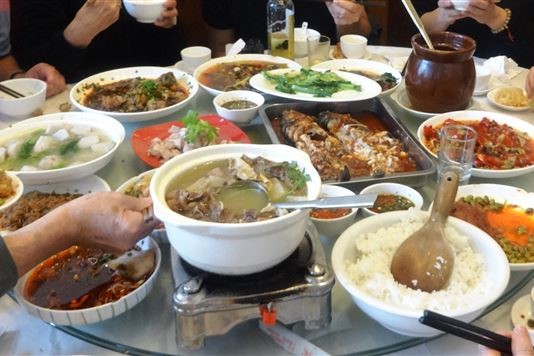
Chinese food expert Ilya Fisher tells us what to eat over Chinese New Year to ensure good wealth, prosperity, longevity, and all-round good luck.
The most wonderful time of the year
Chinese New Year, also called the Spring Festival, is the biggest celebration in China. It lasts 15 days starting in late January (the date is dependent on the lunar calendar), and food, family and friends all play a huge part. Trains are packed as people travel back home to spend this special time with their families; for many it’s the only time of the year they will do so. This year the celebrations begin on 31st January for the Year of the Horse.
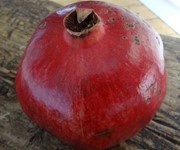 The main themes are good luck, prosperity and longevity, which translates into traditions such as cleaning your home to sweep away any accumulated bad luck, and making the house ready for good luck to enter again. Chillies and pomegranates are considered lucky (red is the colour of good fortune and joy), and money-filled red envelopes are handed out by married people to children during the festival. Fire crackers and dragon dancers scare away bad spirits to prevent them bringing bad luck.
The main themes are good luck, prosperity and longevity, which translates into traditions such as cleaning your home to sweep away any accumulated bad luck, and making the house ready for good luck to enter again. Chillies and pomegranates are considered lucky (red is the colour of good fortune and joy), and money-filled red envelopes are handed out by married people to children during the festival. Fire crackers and dragon dancers scare away bad spirits to prevent them bringing bad luck.
Here are some traditional Chinese New Year dishes which have a symbolic meaning, appearance, or a lucky play on words.
Fish
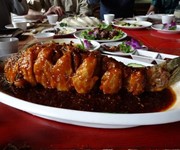 In Mandarin the word for fish is 'yu'. Yu is also the word for ‘surplus’, so eating fish will encourage a prosperous new year. The fish must be whole with head and tail intact, symbolising a good start and end to the year, and also unity. Fish is usually eaten towards the end of the New Year’s Eve family feast, and some is left over to be finished the next day – it encourages prosperity.
In Mandarin the word for fish is 'yu'. Yu is also the word for ‘surplus’, so eating fish will encourage a prosperous new year. The fish must be whole with head and tail intact, symbolising a good start and end to the year, and also unity. Fish is usually eaten towards the end of the New Year’s Eve family feast, and some is left over to be finished the next day – it encourages prosperity.
Spring rolls
The spring roll is a Cantonese dim sum dish named after this ‘Spring Festival’. It’s deep fried until golden, and looks like a gold bar symbolising wealth and prosperity.
Noodles
These need to be eaten whole (the longer the better), so don’t cut them as they represent a long life.
Sweet rice cake – ‘Nian Gao’
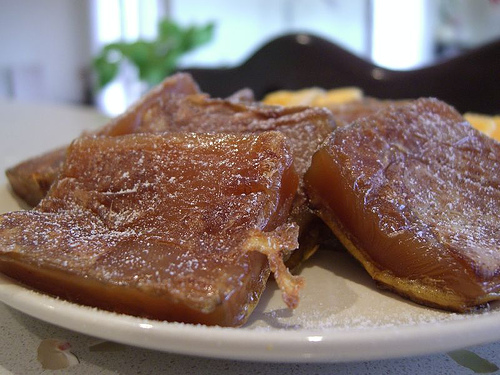 Nian Gao is a sweet, sticky sweetmeat made from glutinous rice flour. It often comes filled with dried fruits. The Mandarin word for New Year cake is ‘nian gao’, a play on words as ‘nian nian gao sheng’ is a greeting meaning 'increasing prosperity year after year'.
Nian Gao is a sweet, sticky sweetmeat made from glutinous rice flour. It often comes filled with dried fruits. The Mandarin word for New Year cake is ‘nian gao’, a play on words as ‘nian nian gao sheng’ is a greeting meaning 'increasing prosperity year after year'.
The sweetness represents a rich sweet life and aimiable disposition, and the round shape of the cake symbolises the family circle.
Jai
This is an exotic Buddhist vegetarian stew brimming with interesting ingredients that each have a symbolism of their own. It may include lily buds (wealth); bamboo shoots (wealth); fried tofu puffs and bean curd sheets (blessings); black or shitake mushrooms (spring; seizing opportunities); carrots (lucky reddish colour; coins); and noodles (long life). At Chinese New Year, Jai never includes any fresh white tofu, as white is a colour associated with funerals and death (similar to the connotations of the colour black in the western world).
Dumplings
 Round dumplings represent family unity, and crescent-shaped dumplings resemble silver or gold ingots. Dumplings are often made at home by the whole family, and if a coin is included in one of the dumplings whoever gets it is sure to become wealthy! Dumplings can be boiled, steamed, shallow or deep fried, and the more you eat the more money you will make in the New Year.
Round dumplings represent family unity, and crescent-shaped dumplings resemble silver or gold ingots. Dumplings are often made at home by the whole family, and if a coin is included in one of the dumplings whoever gets it is sure to become wealthy! Dumplings can be boiled, steamed, shallow or deep fried, and the more you eat the more money you will make in the New Year.
Tray of Togetherness
This delightful tradition is a round or octagonal tray usually filled with six or eight sweet treats to share with visiting friends and family. Eight is a lucky number representing fortune, and six represents wealth in Cantonese, and a good flow in business in Mandarin. Of course each of the treats on the tray has an auspicious meaning.
The fruits are usually candied to herald a sweet beginning to the New Year, and the tray might also include: winter melon for wealth and growth; coconut for togetherness, friendship and unity; lotus seed for fertility; jujube, the Chinese red date, for wealth, prosperity and fertility; peanuts for a happy long life; dried apricots for gold and wealth; and kumquats for prosperity.
A Chinese meal
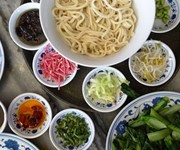 As for making a Chinese feast at home or ordering one at a restaurant, it’s considered important to balance the dishes carefully, because everything is shared. The number of dishes might total the number of people plus two more.
As for making a Chinese feast at home or ordering one at a restaurant, it’s considered important to balance the dishes carefully, because everything is shared. The number of dishes might total the number of people plus two more.
Care has to be taken to give a balance of ingredients, so you might have pork, chicken, fish, tofu and several very different vegetable dishes – perhaps a leafy green and an aubergine dish, soup and rice. A variety of textures and flavours should be available, as well as different cooking methods.
Cantonese steamed sea bass recipe
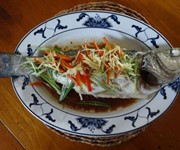 Fancy making your own Chinese New Year dish? Then read my Cantonese steamed sea bass recipe (pictured left).
Fancy making your own Chinese New Year dish? Then read my Cantonese steamed sea bass recipe (pictured left).
Are you celebrating Chinese New Year? How? Do you have a particular dish for good luck? Talk to us in the Comments box.
Nian Gao image courtesy of avlxyz
You might also like
Sichuanese 'dry-fried' green beans
Ken Hom's Sichuan prawns in chilli sauce
Most Recent
Comments
Be the first to comment
Do you want to comment on this article? You need to be signed in for this feature
